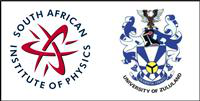Speaker
Abstract content <br> (Max 300 words)
Application of mosses and lichens as biomonitors, analyzed by nuclear and related techniques, has been extensively used to provide information about air quality. These plants possess efficient accumulation capacity for many air pollutants (heavy metals and other trace elements) from atmospheric deposition (Markert et al., 2008; Steinnes, 2011). Studying air pollution with plants, instead of the commercial air filters is a simple, low-cost, effective method to estimate levels of air pollutants and their impact on humans and animals. A steady global increase of the use of active biomonitoring, whereby biomonitors are collected from relatively pristine habitats and transplanted to different environments, is due to the scarcity or total absence of native biomonitors in certain environments e.g large cities with heavy technogenic load and industrial regions as well as in arid areas (Frontasyeva, 2011). Biomonitoring studies about emission of trace elements resulting from road traffic, specifically from tunnels, has not yet received adequate attention in the research world. In our pilot study in the Western Cape, moss and lichen species were deployed inside the Huguenot tunnel and the results are presented in this work. Samples were analysed by the multi-elemental Ion-Coupled Mass Spectrometry (ICP-MS). Moreover, samples will later be subjected to the non-destructive instrumental neutron activation analysis (INAA), thus facilitating an intercomparison of the results obtained by INAA and ICP-MS. We present first results on the elemental uptake by the moss and lichen samples.
This study was undertaken in the framework of a JINR-SA co-operative program with SU.
References:
B. Markert, S. Wuenschmann, S. Fraenzle et al. On the road from environmental biomonitoring to human health aspects: monitoring atmospheric heavy metal deposition by epiphytic/epigeic plants: present status and future needs. Int. J. Environment and Pollution, Vol. 32, No. 4, 2008, p. 486-498.
E. Steinnes, T. Berg, H.T. Uggerud. Three decades of atmospheric metal deposition in Norway as evident from analysis of moss samples. Science of the Total Environment, Vol. 412-413, 2011, p. 351–358.
M.V. Frontasyeva. Neutron activation analysis for the Life Sciences. A review. “Physics of Particles and Nuclei”, 2011, Vol. 42, No. 2, p. 332-378.
Would you like to <br> submit a short paper <br> for the Conference <br> Proceedings (Yes / No)?
Yes
Level for award<br> (Hons, MSc, <br> PhD)?
Phd
Apply to be<br> considered for a student <br> award (Yes / No)?
Yes
Main supervisor (name and email)<br>and his / her institution
Prof. R.T. Newman - (rtnewman@sun.ac.za) - Stellenbosch University

